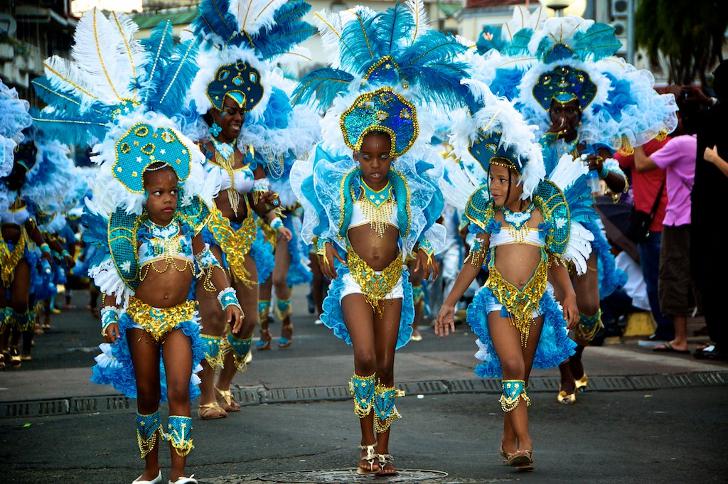Guadeloupe is an overseas region of France located in the Caribbean. It was discovered by Christopher Columbus in 1493 and annexed to the kingdom of France in 1674. Guadeloupe became one of the first important slave societies in the Caribbean, switching to slavery in the late 17th century when French settlers brought slaves from Africa to work on sugar plantations.
The French also brought the Western Christian carnival tradition to Guadeloupe. The carnival season features a series of festivities which occur during the period known as Shrovetide and culminate on Shrove Tuesday (Mardi Gras), the last day before the beginning of Lent. At first, Guadeloupean slaves were banned from participating in the festivities. But over time planters allowed black slaves to join the carnival. During the carnival, they were even allowed to make fun of their masters without without the fear of retribution. Over the years, European carnival traditions merged with African customs, creating the modern Caribbean carnival in Guadeloupe.
Like any Caribbean carnival, the Guadeloupe Carnival features revelers in bright traditional costumes, dancers, musicians and other performers. The holiday spirit is evident throughout the entire carnival season, but main events are typically held on Sundays. Every Sunday, there is a colorful parade featuring floats and revelers celebrating the Caribbean and Afro-Caribbean culture. Local musicians play calypso music, a style of Afro-Caribbean music originating in Trinidad and Tobago, using traditional instruments (trumpets, flutes, clarinets, guitars, different kinds of drums including steelpans, maracas, and even glass bottles).
The Guadeloupe Carnival culminates on Shrove Tuesday (the day before the beginning of Lent). On this day, parades are held throughout Guadeloupe, but main festivities take place in Basse-Terre and Pointe-à-Pitre. In the morning, people dressed in pajamas march through the city. The pajama parade is followed by a regular parade, masquerades, parties, dancing and other festivities that lasts all day long.
Ash Wednesday is the first day of Lent and the last day of carnival. Locals dress in black and white clothes to mourn the King Vaval, a traditional character who serves as carnival king. The effigy of the King Vaval is burned during the ceremony known as “Grand brilé Vaval”.

Photo by jm_deternoz




